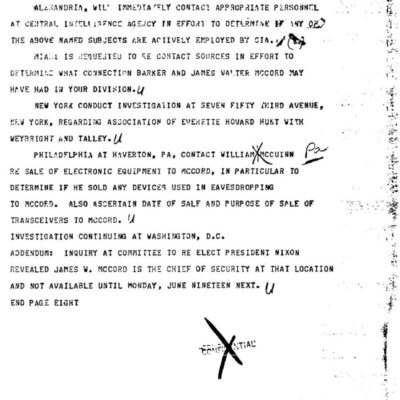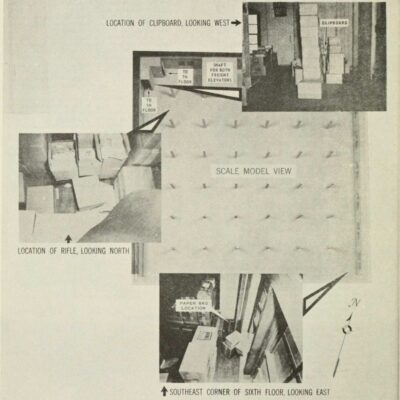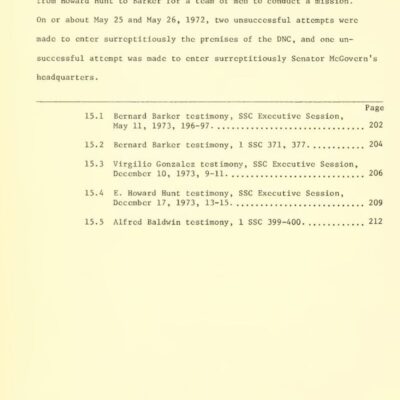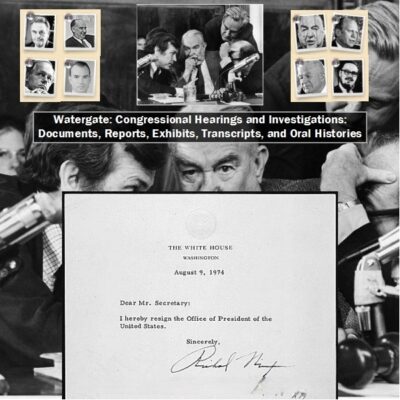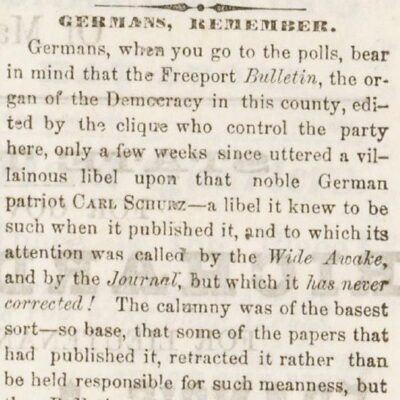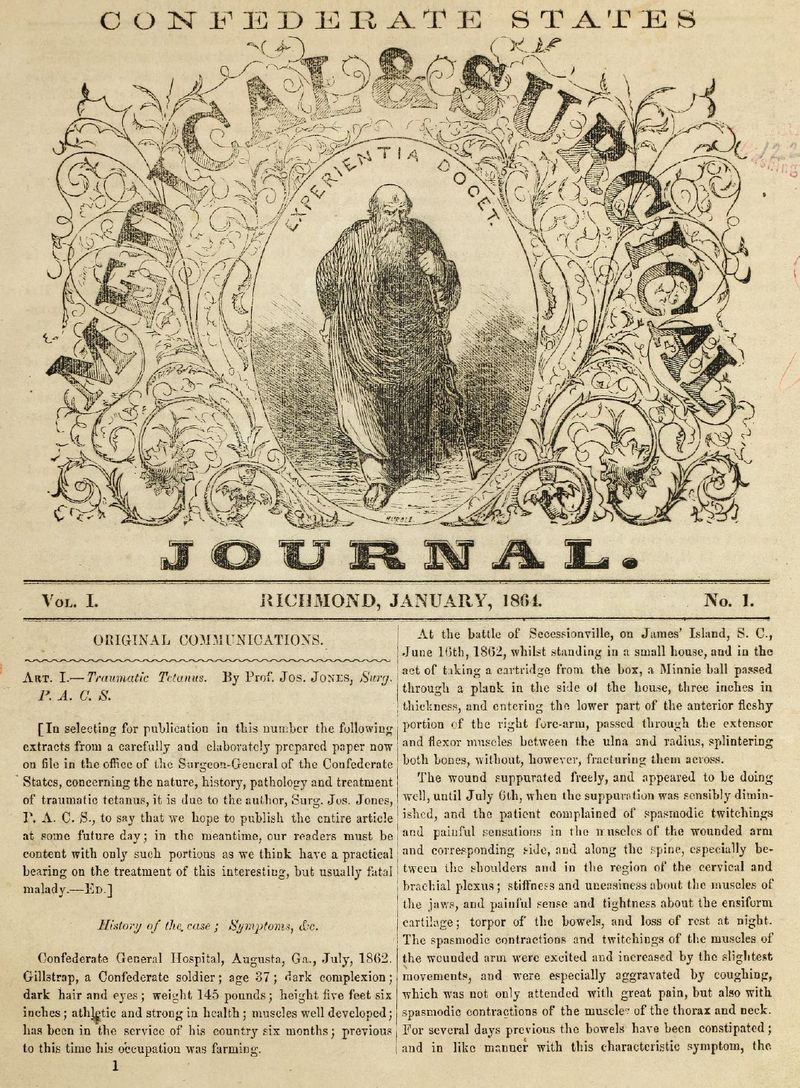

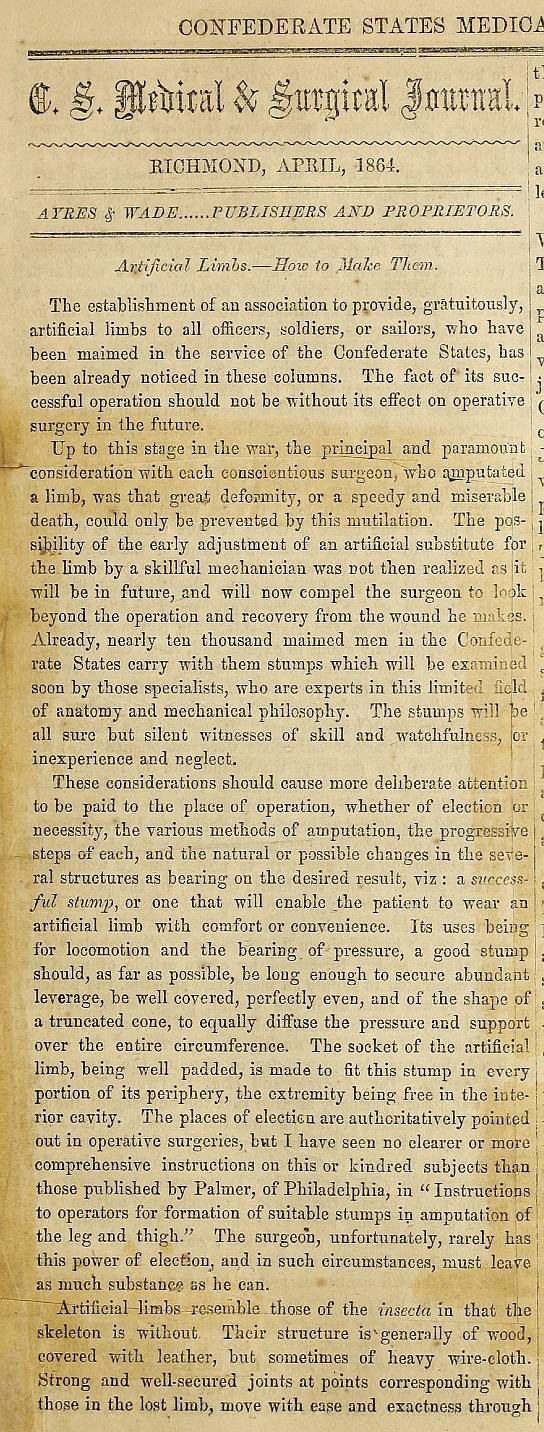
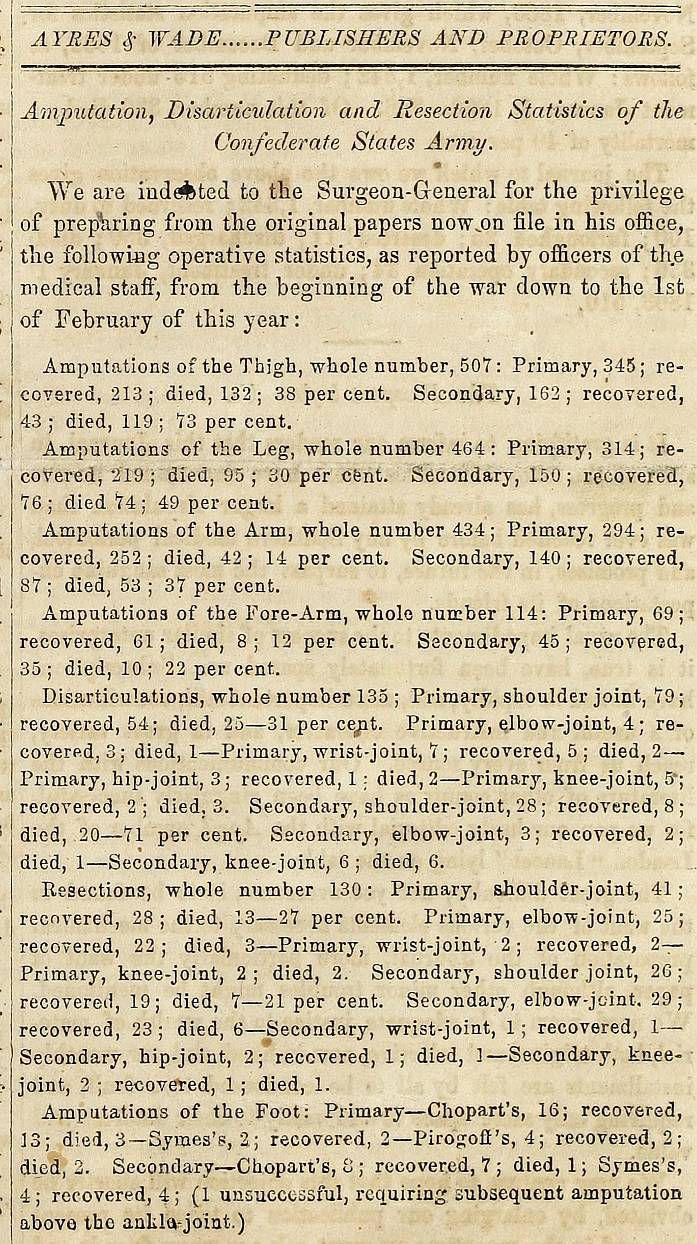
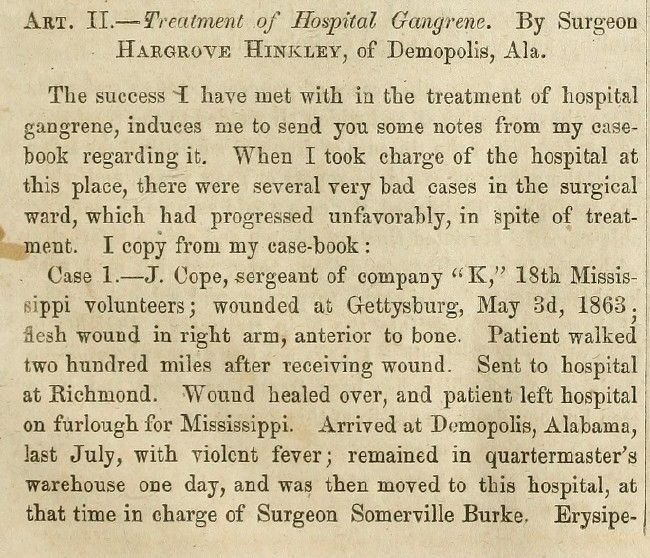
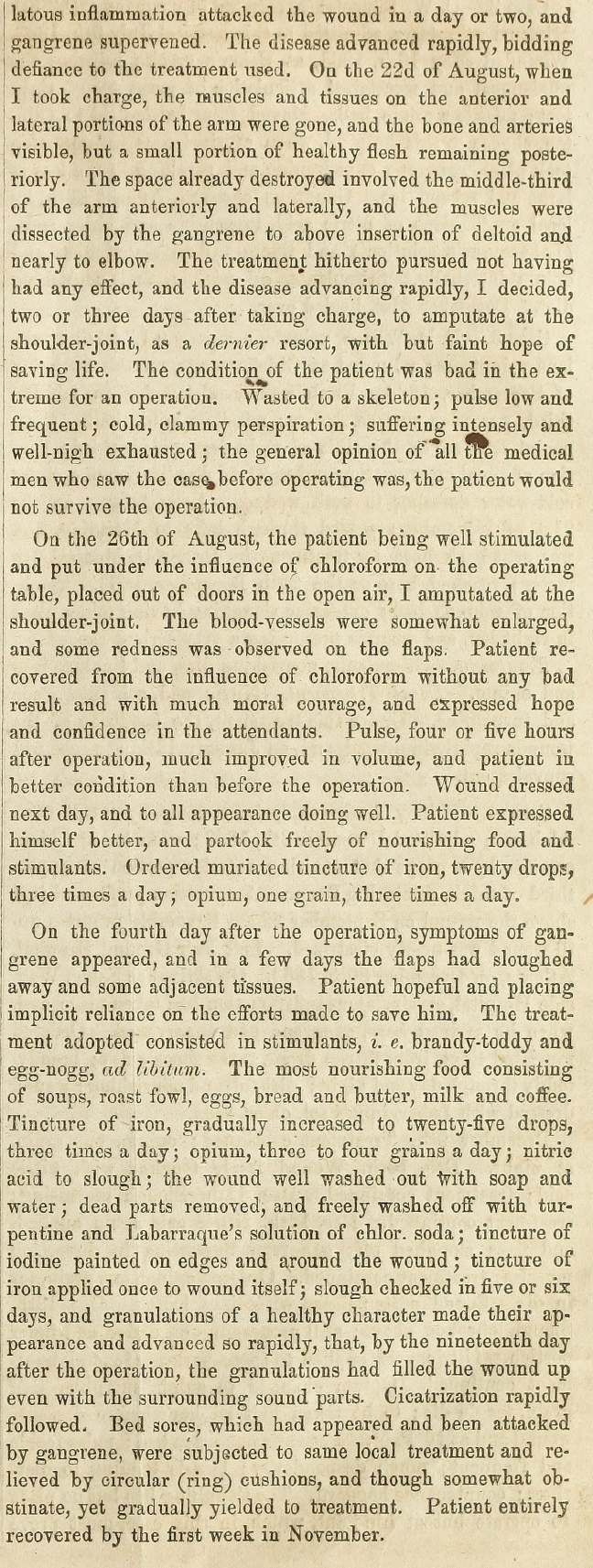
Civil War Confederate States Medical and Surgical Journal (1864 – 1865)
$19.50
Description
The Confederate States Medical & Surgical Journal consists of 282 pages and includes all 14 issues that were published between January 1864 and February 1865. These materials are sourced from the archives of the Boston Medical Library, specifically located within the Francis A. Countway Library of Medicine in Boston, Massachusetts.
This journal stands out as the sole medical publication produced during the time of the Confederacy, with its monthly editions being printed in Richmond, Virginia. The majority of the content found in the Confederate States Medical & Surgical Journal (often abbreviated as C.S.M.S.J) is comprised of various case studies, updates on wartime developments, accounts concerning the treatment of wounds and surgical practices, hospital evaluations, insights into the use and sourcing of medications—including those derived from native Southern plants—reports on medical advancements in Europe, innovations in prosthetic devices, analyses of disease outbreaks, correlations between clinical findings and pathological observations, along with statistical examinations.
In a commentary featured in the Bulletin of the New York Academy of Medicine, Dr. William D. Sharpe noted that “the quality of the articles in the Journal is commendable, comparable to that of any of its American peers, although there are noticeable constraints regarding space, which occasionally leads to a rather brief writing style.”
The editing responsibilities for the Confederate States Medical & Surgical Journal (C.S.M.S.J) were held by Dr. Samuel Preston Moore (1813-1889), who served as the Surgeon General for the Confederate States of America. Dr. Moore received his training as a military surgeon in the U.S. Army in 1835 and continued in this role until 1861. During his tenure as a surgeon in the Mexican-American War, he developed a friendship with Colonel Jefferson Davis, who would later become the President of the Confederacy. On February 25, 1861, Moore resigned from his position as a U.S. Army surgeon to pursue his medical career in Little Rock, Arkansas. Subsequently, on March 16, 1861, he was appointed by Davis as the Surgeon-General of the Confederate States Army Medical Department. In their article about Moore published in the American Journal of Surgery, doctors Peter N. Purcell and Robert P.ummel Jr. highlighted his impactful tenure as CSA Surgeon General. They noted that he significantly upgraded the previously average medical corps by enhancing recruitment criteria and refining treatment procedures. Additionally, he strategically appointed the most skilled surgeons to leadership roles, thereby improving the overall quality of care. He also made advancements in the ambulance service and oversaw the development of several new hospitals dedicated to treating Confederate wounded soldiers. Notably, he was instrumental in creating a design for barracks hospitals that continues to be relevant in modern times. Furthermore, Moore initiated the Confederate States Medical and Surgical Journal and led efforts to find alternative sources for essential medications using local plants found in the South. He was also the founder of the Association of Army and Navy Surgeons of the Confederate States of America. Through his expertise and commitment, Dr. Moore effectively turned the medical division into one of the most proficient sectors of the Confederate military, playing a crucial role in saving countless lives on the battlefield.
The Confederate States Medical and Surgical Journal (C.S.M.S.J.) was produced in a letterpress format featuring double columns, sized at quarto with dimensions of 9 by 12 inches. Between January and July 1864, each edition consisted of 16 pages, but from August 1864 onward, the number of pages increased to 24 until the journal stopped publication. The publishing company Ayres and Wade, which was also responsible for the Southern Illustrated News, managed the distribution of the Journal.
Initially, the subscription fee for the Journal was set at $10.00 per year until September 1864, when it increased to $20.00. The cover of the first eight issues featured an elaborate half-page illustration of either Aesculapius or Hippocrates, accompanied by the journal’s motto, “Experientia Docet,” meaning “Experience is the best teacher” in English. From the ninth issue onward, the title appeared entirely in printed letters on the cover page.
According to the prospectus for the Journal: It is suggested that a new medical journal be launched in this city starting January 1st of the upcoming year, and we kindly request the support and collaboration of both military medical personnel from the army and navy, as well as the wider medical community.
Given the significant role the southern medical professionals play in representing our nation, there is a pressing need for a platform that showcases their remarkable contributions, especially during the challenging times of war. By gaining unrestricted access to the records and documents of the Medical Department and working closely with the Army and Navy Surgeons Association, this proposed journal aims to serve as an unbiased representative of the medical field. It will gather and analyze the important findings from their work. Furthermore, this publication will facilitate communication with fellow medical practitioners in other nations, and it will prominently feature a well-organized summary of medical advancements sourced from recent publications in English and across Europe. In essence, the editorial team will make every effort to establish a solid and lasting foundation for Southern medical literature.
Sharpe summarized the journal by stating that it was highly successful during its run. The articles were well-crafted, insightful, and original, addressing the surgical challenges and infectious diseases faced by country doctors who transitioned into army surgeons, making it both relevant and timely to the circumstances at hand. The Journal features cutting-edge ideas and treatments, showcasing reports on unique cases and highlighting recent scientific breakthroughs. It delves into innovative concepts that push the boundaries of medical understanding. If a diligent reader could step away from immediate concerns, they would find themselves ready to engage with the progressive atmosphere that characterized the significant advancements occurring in the final decades of the 19th century. This includes recognizing the critical role that hygiene and rest play in wound recovery, the integration of laboratory resources for diagnosing complex health issues, the acknowledgement of disease transmission, and the necessity of meticulous clinical and autopsy examinations.
Key highlights from the Journal comprise:
Reports focused on creating medicinal products derived from native plants found in the southern regions of the United States. Due to the Union’s blockade, access to conventional medicines was severely restricted, prompting Dr. Moore to seek alternative remedies. The July 1864 edition featured a comprehensive “Standard Supply Table of the Indigenous Remedies for Field Service and Sick in General Hospital,” which listed 64 native plants along with their official names, common names, therapeutic properties, suggested dosages, and applications as substitutes for unavailable traditional medications.
Articles authored by William T. Wragg from Charleston, South Carolina, addressing the yellow fever outbreak in Wilmington during the year 1862. His research was later published in the New York Medical Journal following the conclusion of the war.
A detailed account by Jackson Chambliss titled “Case of Traumatic Femoral Aneurism Treated by Digital Compression, Ligation afterwards of the External Iliac Artery” presents a thorough documentation of a case that ultimately did not succeed, including findings from the autopsy and an exhaustive clinicopathologic analysis.
Additionally, the Journal included a consistent segment known as “The Chronicle of Medical Science,” designed to provide Southern physicians with updates on medical advancements from abroad. The ongoing conflict and its resultant blockade made it difficult for practitioners in the South to obtain medical literature from outside the Confederacy. Thomas K. Chambers’ article titled “Treatment of Pneumonia and Pleurisy” provides an overview of how to manage these two medical conditions. It discusses various aspects including the methods for physical diagnosis, the natural progression of the diseases, their pathological features, the mechanisms by which they develop, and the pharmacological treatments available.
In addition to the aforementioned article in the Confederate States Medical & Surgical Journal, this collection also encompasses several notable documents:
One significant piece is “A Manual of Military Surgery Prepared for the Use of the C.S.A. Army,” published in 1863. This comprehensive manual, consisting of 359 illustrated pages, was produced by the office of the Surgeon-General of the Confederacy. It was overseen by Dr. Samuel Preston Moore, who took charge of gathering and publishing these materials, which were designed as a practical handbook for medical personnel serving on the front lines.
Another important document is the “Circular: Maintenance and Use of Records of Gunshot and Other Wounds,” issued in 1862. In this circular, Surgeon General Moore underscores the critical need to meticulously document details regarding injuries sustained during combat.
The collection also includes a “Standard Supply Table of Indigenous Remedies for Field Service and the Sick in General Hospitals,” published in 1863, which outlines essential remedies suitable for use in military operations.
Lastly, there is a “Report of the Apportionment of the General Hospitals in and Around Richmond,” dated February 13, 1864, which provides insights into the distribution and organization of hospitals in that area during the war.
Timeline of Events
This timeline is based on the provided excerpt and focuses on the publication of the “Confederate States Medical & Surgical Journal.” Specific dates for events within the journal are not provided.
1835: Samuel Preston Moore begins his training as a military surgeon in the US Army.
Mexican-American War (1846-1848): Moore serves as a surgeon and befriends Jefferson Davis.
February 25, 1861: Moore resigns his commission as a US Army surgeon.
March 16, 1861: Jefferson Davis appoints Moore Surgeon-General of the Confederate States Army Medical Department.
1862:
- William T. Wragg works on the yellow fever epidemic in Wilmington.
- Moore issues the “Circular: Maintenance and Use of Records of Gunshot and Other Wounds.”
- Publication of “A Manual of Military Surgery Prepared for the Use of the C. S. A. Army.”
- Publication of “Standard supply table of the indigenous remedies for field service and the sick in general hospitals.”
January 1864: The first issue of the “Confederate States Medical & Surgical Journal” is published in Richmond, Virginia.
February 13, 1864: “Report of the apportionment of the general hospitals in and around Richmond” is published.
July 1864:
- The “Standard Supply Table of the Indigenous Remedies for Field Service and Sick in General Hospital” is included in the journal.
- The journal increases its page count from 16 to 24 per issue.
September 1864: The annual subscription price for the journal increases from $10.00 to $20.00
February 1865: The final issue of the “Confederate States Medical & Surgical Journal” is published.
Post-War: William T. Wragg publishes his work on yellow fever in the “New York Medical Journal.”
Cast of Characters
Samuel Preston Moore (1813-1889): Surgeon General of the Confederate States Army Medical Department. A skilled military surgeon, Moore reformed the Confederate medical corps, improved ambulance services and hospitals, and spearheaded the publication of the “Confederate States Medical & Surgical Journal” to disseminate medical knowledge within the Confederacy.
Jefferson Davis (1808-1889): President of the Confederate States of America. A former US Army Colonel and Secretary of War, Davis appointed Moore Surgeon General based on their friendship and Moore’s demonstrated medical expertise.
William D. Sharpe: A medical historian who later wrote about the quality and significance of the “Confederate States Medical & Surgical Journal” in the “Bulletin of the New York Academy of Medicine.”
Peter N. Purcell and Robert P. Hummel Jr.: Medical authors who wrote about Moore’s accomplishments as Surgeon General in the “American Journal of Surgery,” highlighting his positive impact on Confederate military medicine.
William T. Wragg: A physician from Charleston, South Carolina who researched and wrote about the 1862 yellow fever epidemic in Wilmington, North Carolina. His work was later published in the “New York Medical Journal.”
Jackson Chambliss: A Confederate physician who contributed to the journal, notably with his detailed case report on “Traumatic Femoral Aneurism” including unsuccessful treatment, autopsy findings, and analysis.
Thomas K. Chambers: A physician who contributed an article on the treatment of pneumonia and pleurisy to the journal, covering diagnosis, progression, pathology, and drug therapy.
Ayres and Wade: The Richmond, Virginia-based publishing company responsible for printing the “Confederate States Medical & Surgical Journal” as well as the “Southern Illustrated News.”
Aesculapius and Hippocrates: Figures from Greek mythology and history, respectively, associated with medicine and healing. Their images were featured on the early covers of the journal.
